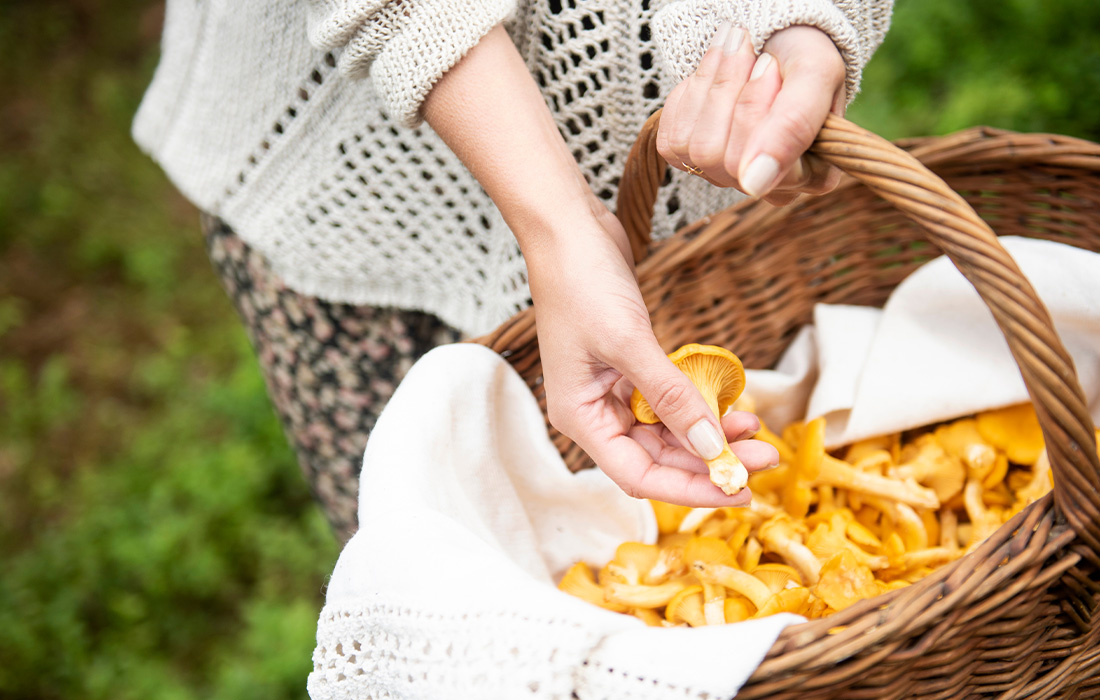This year’s morel-hunting season is long over, but fret not—fall is finally here, and with it comes the best time for picking wild mushrooms! Get your foraging gear ready, watch for rainy weather, and don’t forget to bring Plantum along with you to help identify these 10 seasonal delights.
- Chicken-of-the-woods (Laetiporus sulphureus)
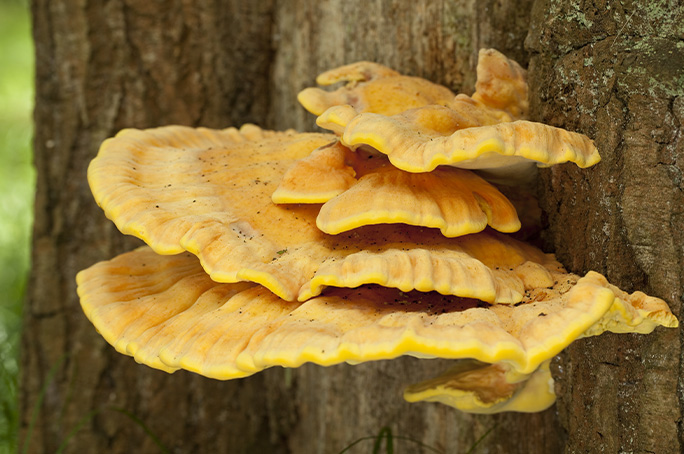
Early spring–mid fall (peak September)
This polypore’s vibrant orange and yellow shelves can be mistaken for little else (except other edible mushrooms from the Laetiporus genus). Although the chicken-of-the-woods has a wide range of hardwood host trees, you’re most likely to spot it growing on oaks. Only its young fruiting bodies are good for harvest—check if they’re soft to the touch, succulent, and smell faintly of lemon. The chicken-of-the-woods is a great substitute for actual chicken and can be prepared in a similar fashion, but some say its taste is closer to lobster. There’s only one way to find this out for yourself—go ahead and search for this funky fungus!
- Hen-of-the-woods (Grifola frondosa)
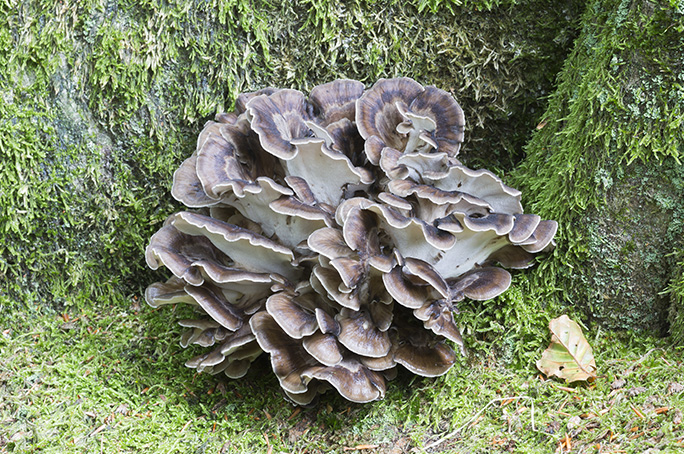
Early–late fall (peak October)
Despite its similar common name, this mushroom has little to do with the chicken-of-the-woods. It grows only at the bases of trees, occurs in shades of brown, and forms bushy rosettes instead of shelves. They do share a preference for oaks though, and you might find these “fowl” together in the same forest. The hen-of-the-woods is well-suited for pickling, sauteing, and deep-frying; that is, if the fungus you’ve collected actually belongs to this species. Its look-alike—the black-staining polypore (Meripilus sumstinei)—is edible, but its rubbery texture leaves a lot to be desired.
- Giant puffball (Calvatia gigantea)
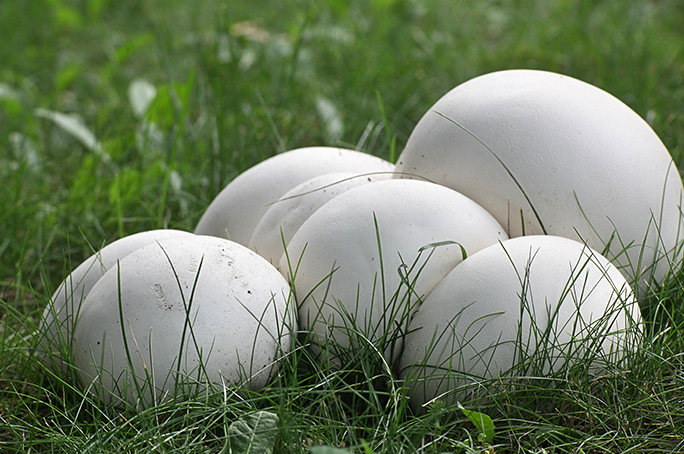
Mid-summer–late fall (peak September)
Imagine coming across what looks like a plastic jug or forgotten volleyball laying on the ground in the meadow to find that it’s actually a giant mushroom! This is how people unfamiliar with foraging tend to discover the giant puffball, and it might be your introduction to it too. Its taste ranges from somewhat nutty to barely perceptible. You can treat it as a flavor sponge like you would tofu, use its slices as pizza crusts, or simply fry it with batter—but before you do any of this, make sure the flesh of the fruiting body is white and firm throughout. If there are any signs of yellow or brown discoloration, the giant puffball is no longer safe to eat.
- King bolete (Boletus edulis)
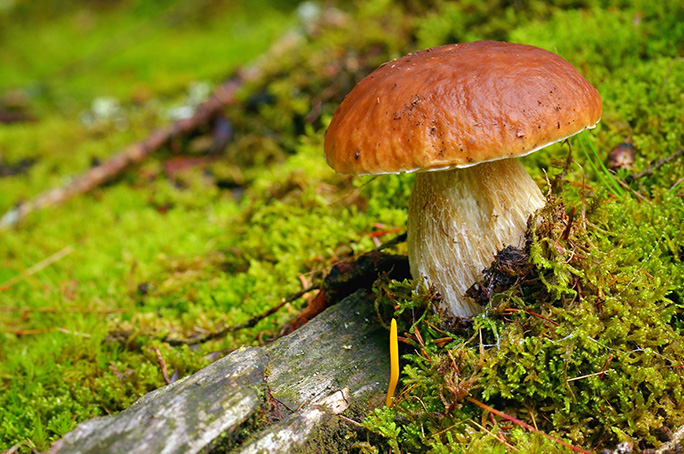
Early summer–early winter (peak September)
King bolete, porcini, penny bun—no matter what you call it, this is one of the finest edible mushrooms. Insects and slugs are well aware of that too and often gobble up young fungi before there’s any chance of finding them. Check the local mushroom observation maps and ask experienced foragers for king bolete fruiting locations to get a leg up in this race, as its spores don’t spread very far from established sites. Coniferous forests are your best bet, but its look-alikes grow there as well. Avoid them by ignoring any mushroom with reddish or pinkish pores and flesh that changes color when exposed to air.
- Lion’s mane (Hericium erinaceus)
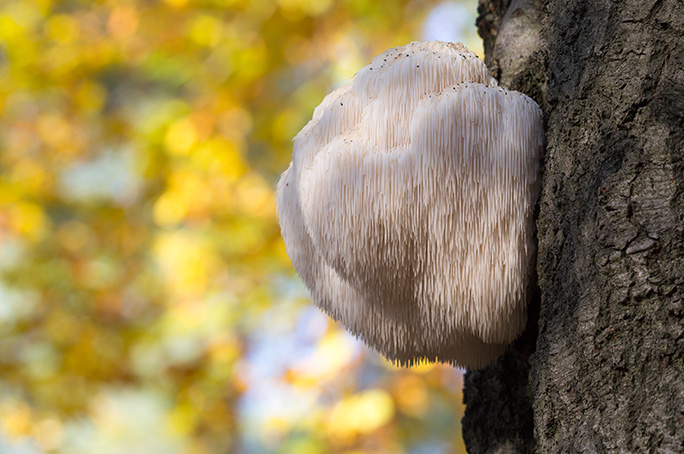
Late summer–mid-winter (peak October)
How often do you come across a tree with a mane, much less a mane you can eat? The dangling and flexible white spines of the lion’s mane have a shellfish flavor to them, so much so that it can be used in place of crab for making crab cakes. Look for it in deciduous forests, particularly on the trunks of dead and dying oaks and beeches. In terms of cooking, the best lion’s manes can be distinguished by spines that haven’t grown out too long before picking. Unfortunately, its reputation as a gourmet mushroom has led to it becoming very rare in some areas due to overharvesting. Check the local legislation first to see if foraging for the lion’s mane is legal where you live.
- Wood blewit (Clitocybe nuda)
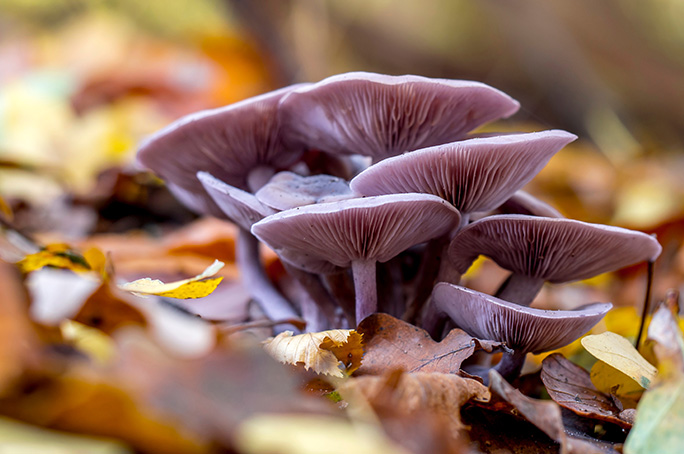
Early fall–late winter (peak October)
A lilac beauty that even smells like lilac—while the fruiting body is young, anyway. With age, wood blewits trade their shades of purple for beige hues, which makes them more difficult to distinguish from other mushrooms. They have a strong flavor that doesn’t need much side ingredients. In forests, you can spot these mushrooms growing on leaf litter and pine needles, but they can also pop up in wood mulch if you’re lucky. Inspect potential wood blewits well before adding them to your basket! If the mushroom has a web-like veil covering its gills and its stem is coated in rusty-brown spores, then you have yourself a potentially poisonous Cortinarius species that should be discarded immediately.
- Black trumpet (Craterellus cornucopioides)
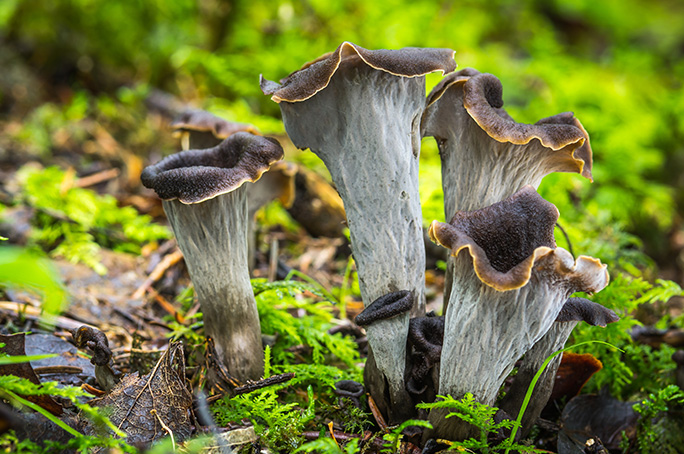
Mid-summer–early winter (peak September)
The black and gray exterior of these funnel-shaped fungi makes them easily blend in with the forest floor, but you’ll be greatly rewarded if you take the time to scope your surroundings for them. Unlike their camouflaged fruiting habit, black trumpets absolutely stand out in dishes owing to their strong, earthy, and savory flavor. However, it’s quite a challenge to gather enough of them to make a sizable meal since they usually grow in sparse clusters, so these mushrooms are often ground up for seasoning or used for making sauce. Black trumpets can be found in hardwood forests under beeches and oaks, especially if there’s lots of moss present as well.
- Lobster mushroom (Hypomyces lactifluorum)
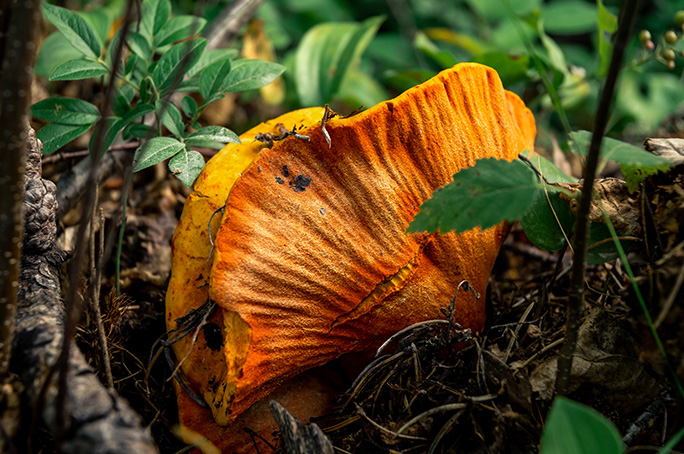
Early summer–late fall (peak August)
Found exclusively in North America, this species is a fungus that parasitizes mushrooms from the Russula, Lactarius, and Lactifluus genera. The fruiting bodies colonized by it sport a hard orange coating similar in color to boiled lobster. Their flavor can vary depending on the host mushroom’s species but is generally mild and fishy; their texture, on the other hand, is always firm and potato-like. Look for lobster mushrooms in mixed forests—their hosts are mycorrhizal and can grow under both hardwoods and conifers.
- Oyster mushroom (Pleurotus ostreatus)
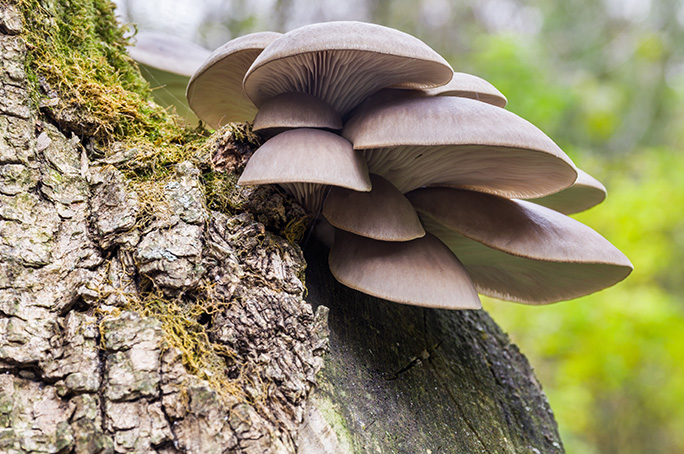
Early fall–late winter (peak December)
A ripe flush of these shellfish-looking fungi is sure to make your day! They’re well-known (and commercially cultivated) for their meaty texture and savory flavor with a hint of anise. You can also come across edible look-alikes that prefer certain trees, like the aspen oyster (Pleurotus populinus). Pick these mushrooms only if they’re growing on deciduous hardwoods since oyster-looking fungi on conifers are likely to be angel wings (Pleurocybella porrigens), which are unsafe for consumption.
- Golden chanterelle (Cantharellus cibarius)
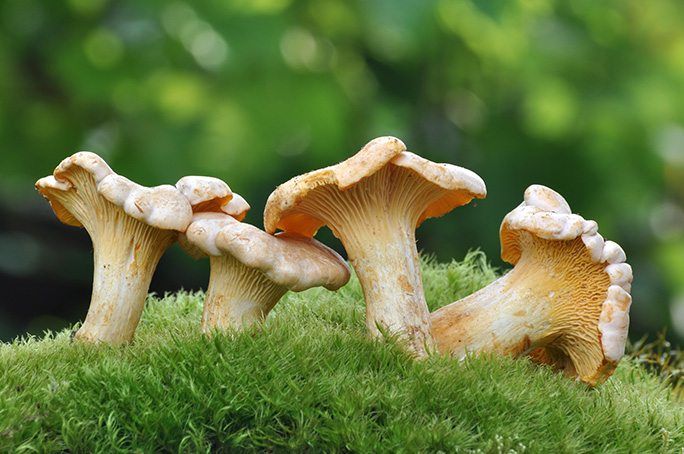
Early summer–late fall (peak August)
Last but not least, this is a true fall classic. Primarily a European species with many cibarius-like North American cousins, these fruity-smelling yellow morsels are great to have in omelets, creamy soups, risottos, and what have you. Look for them in the mossy forest ground under conifers like firs and pines, as well as hardwoods like oaks and beeches. Be careful not to pick up any false chanterelles though! The easiest way to distinguish between them is to inspect their gills. True chanterelles have false gills—they’re actually surface-level ridges in the fruiting body. If you see wrinkles or connections between these “gills”, you can be certain that you’ve found a true chanterelle.
Remember: never pick a mushroom unless you’re 100% certain of its species, don’t forage anywhere in or nearby polluted areas, cook mushrooms thoroughly before eating them, and be respectful of nature as you go. Happy hunting!
